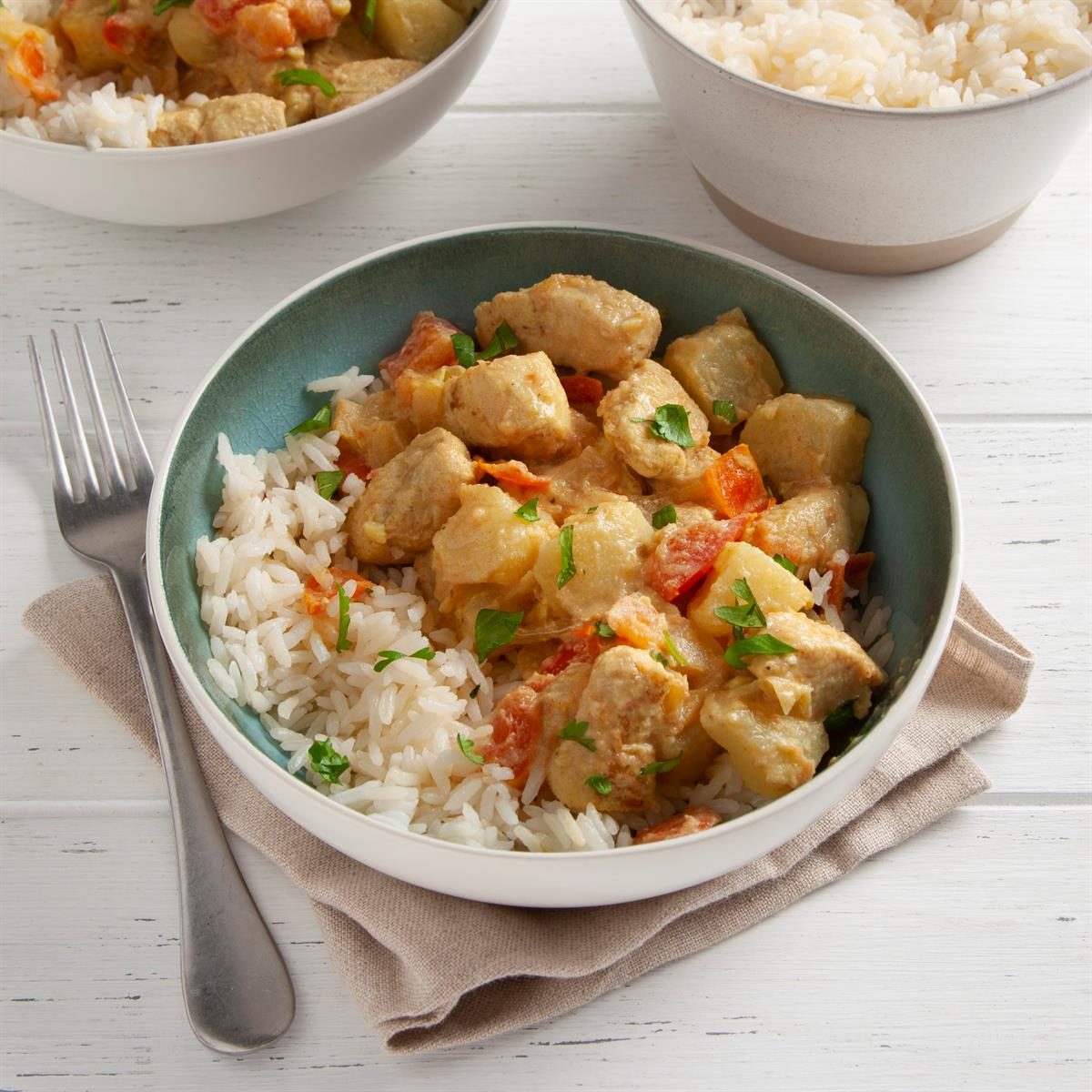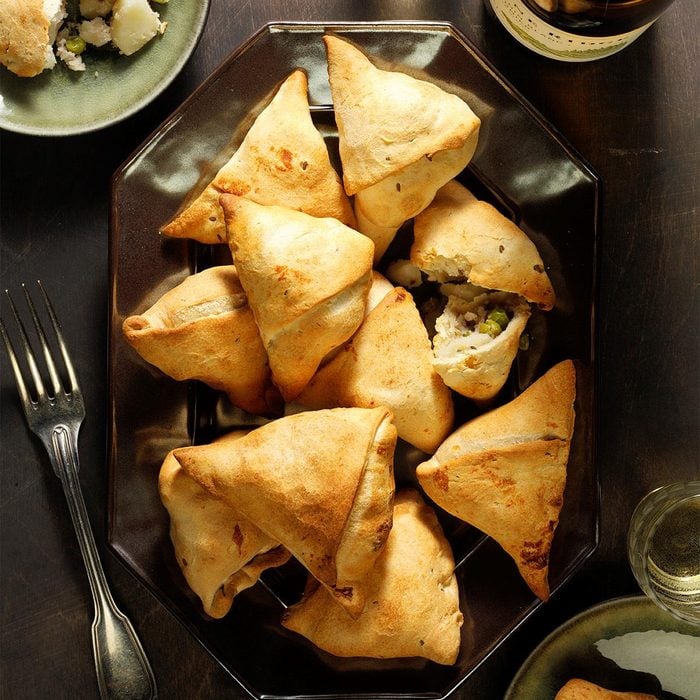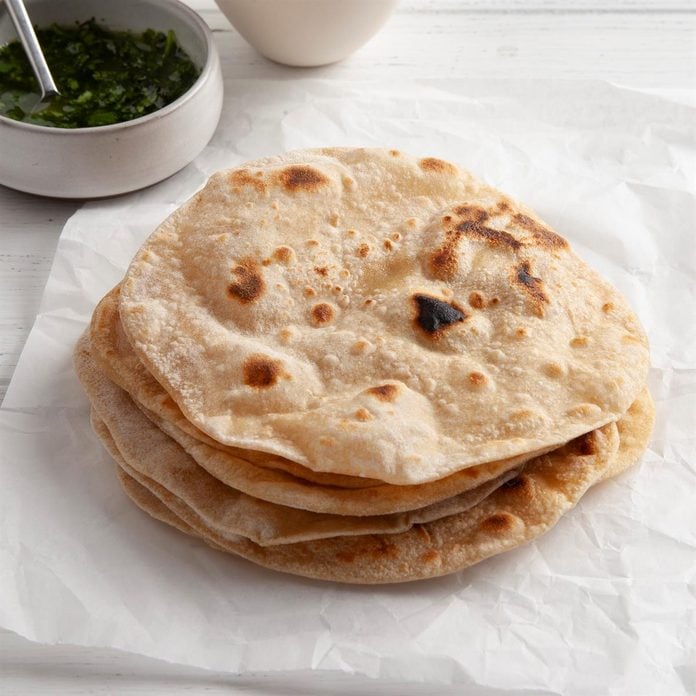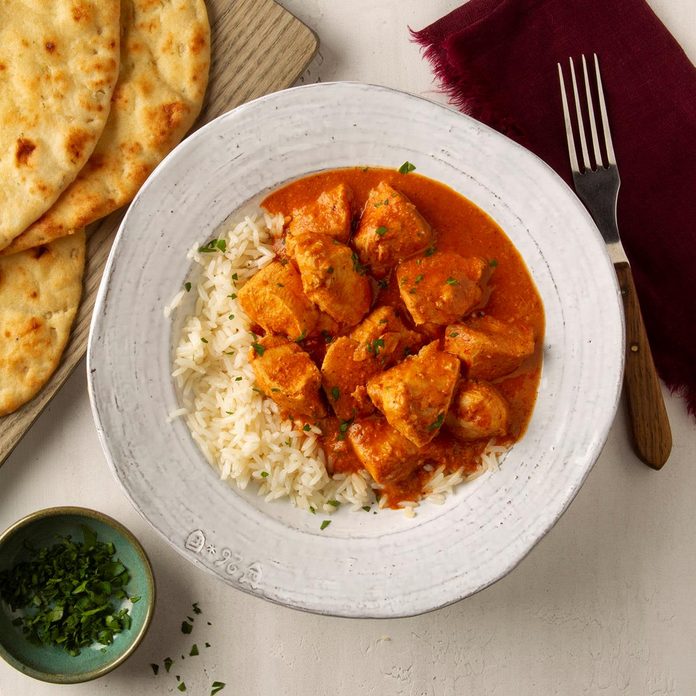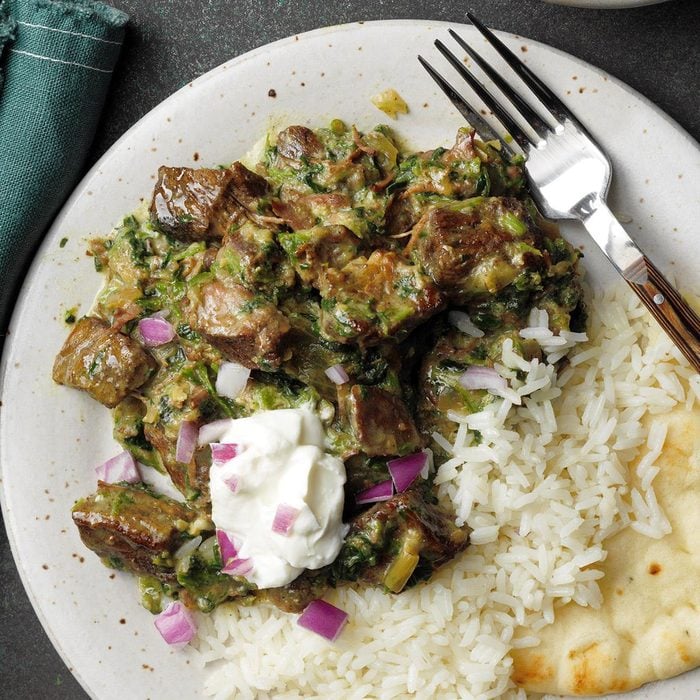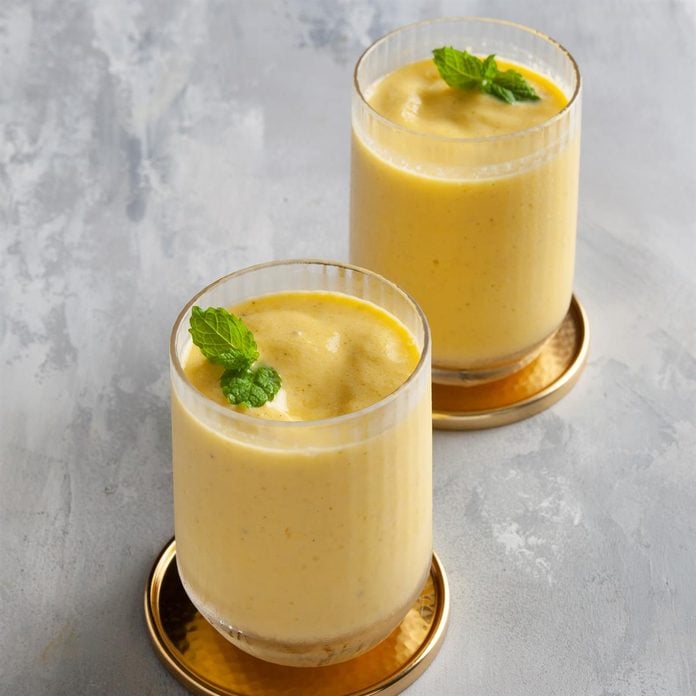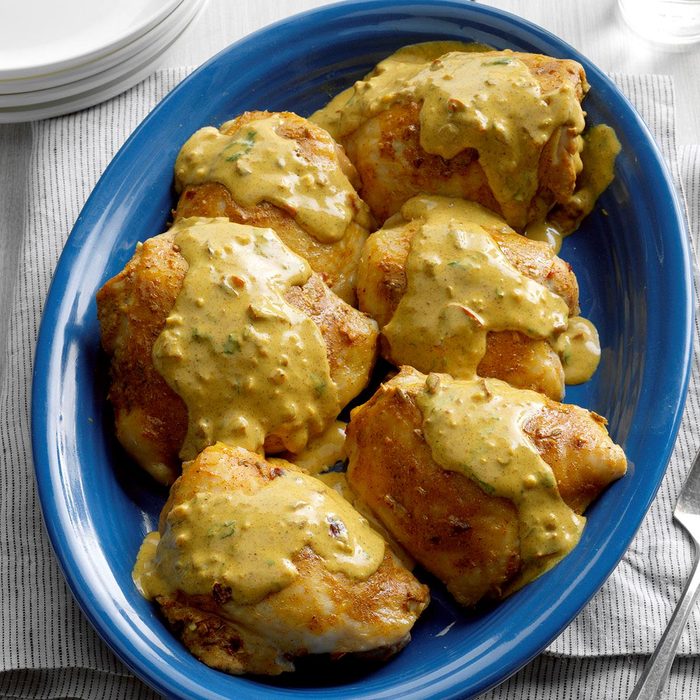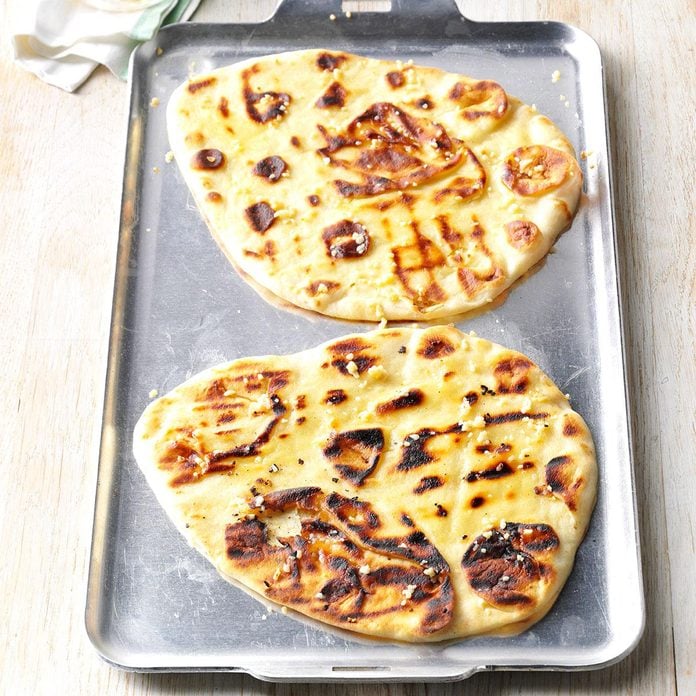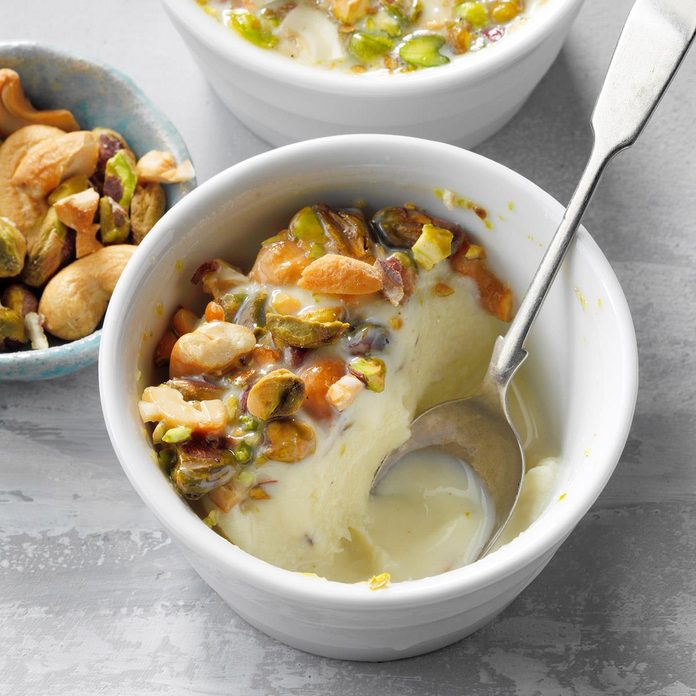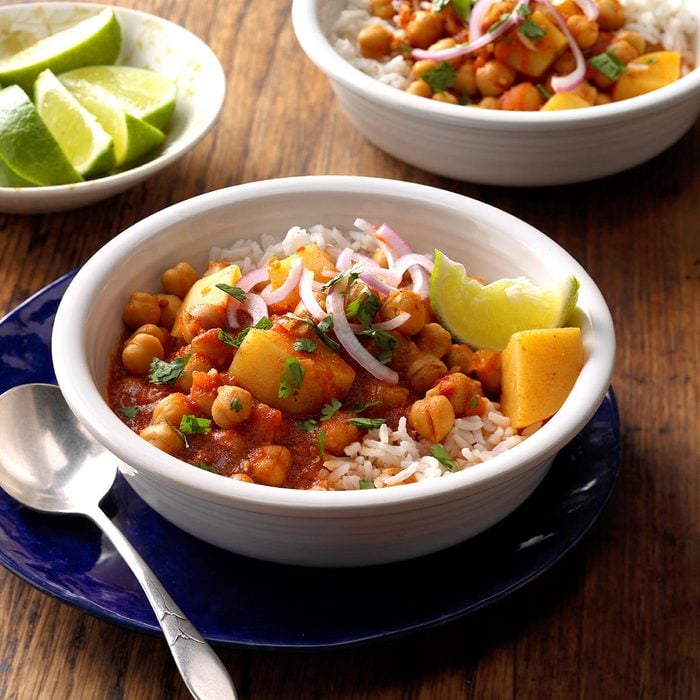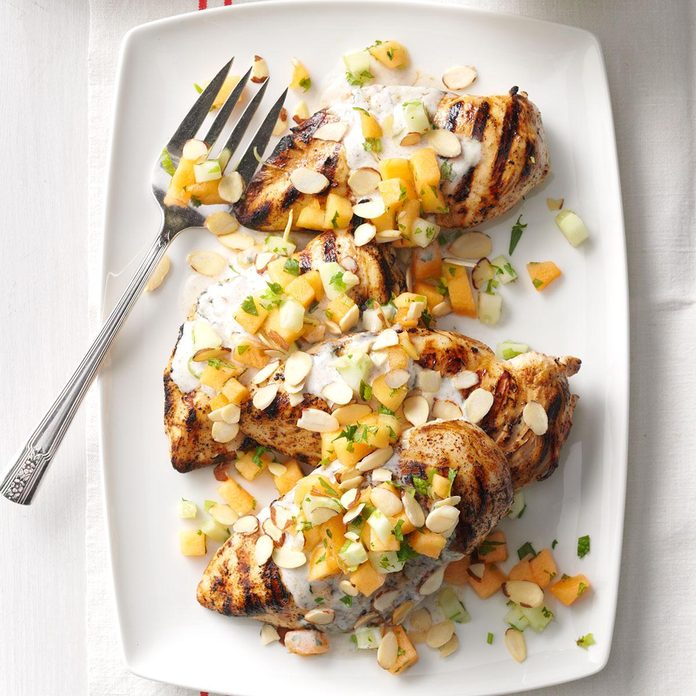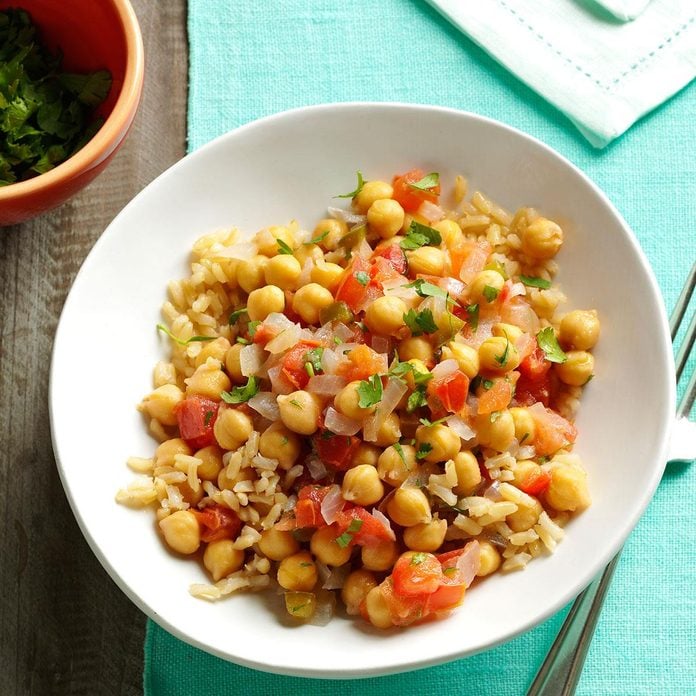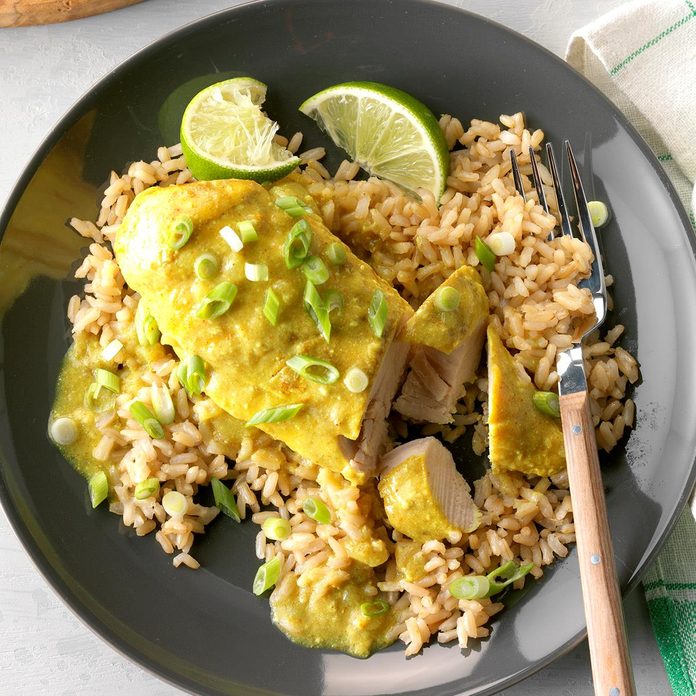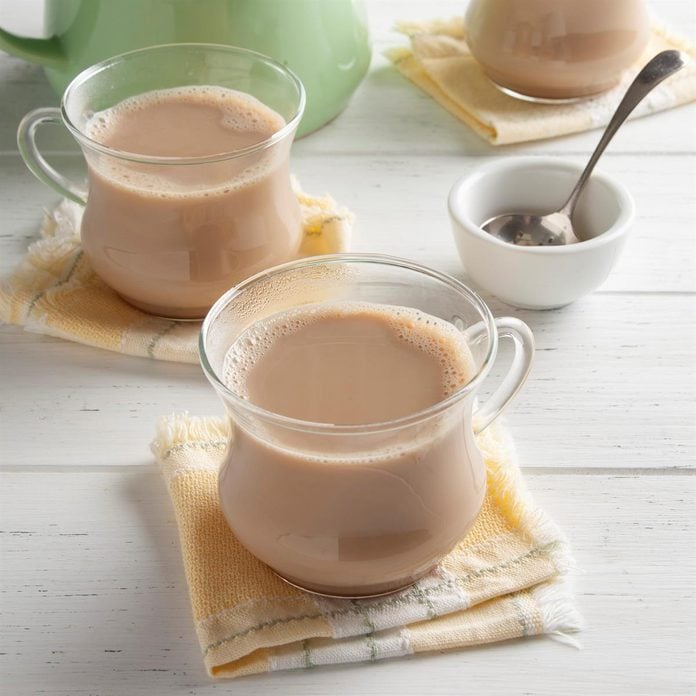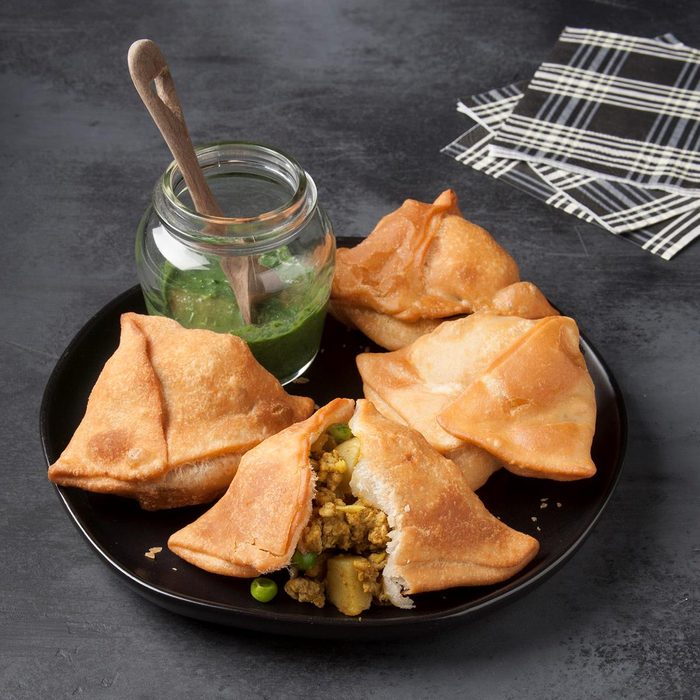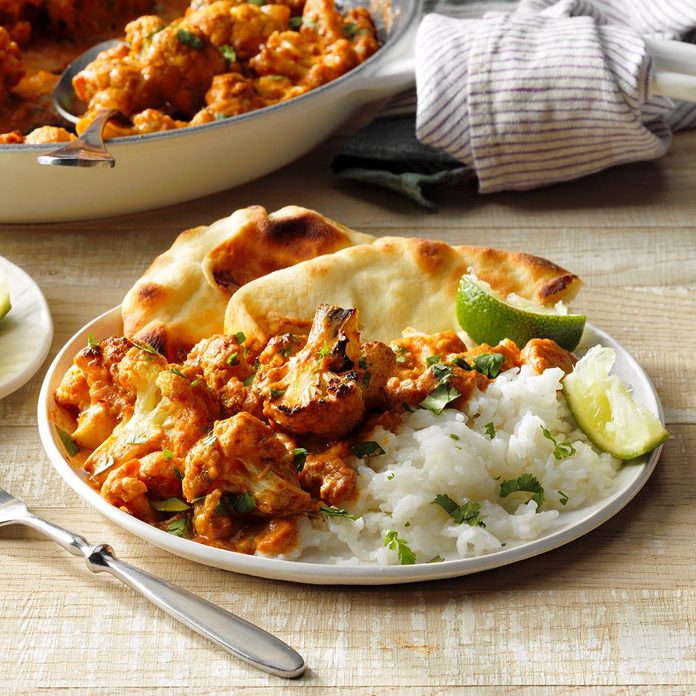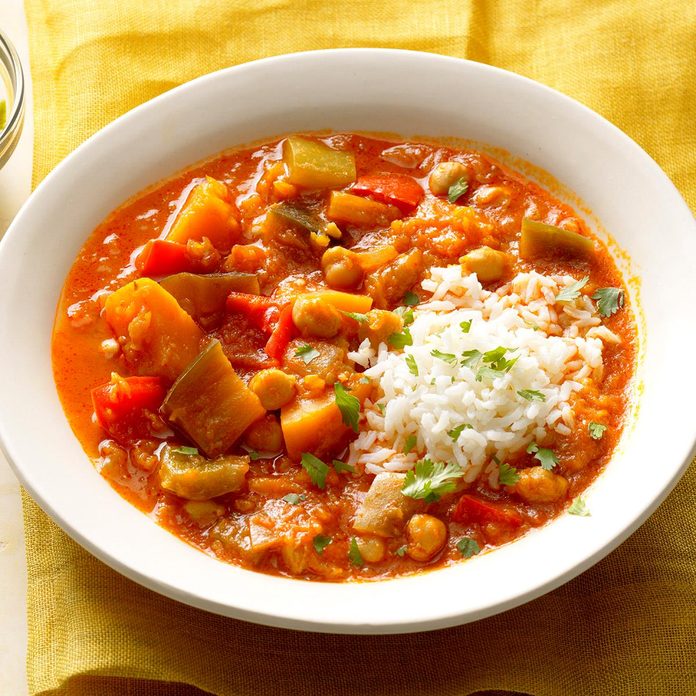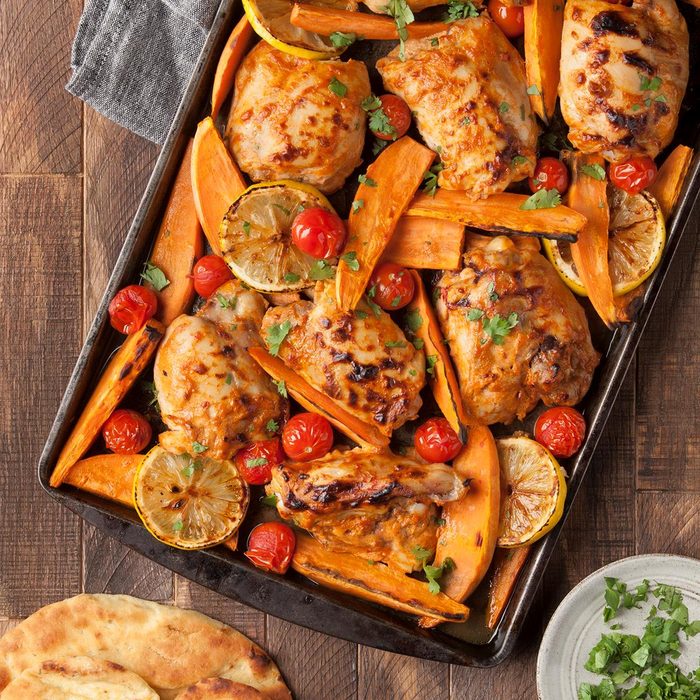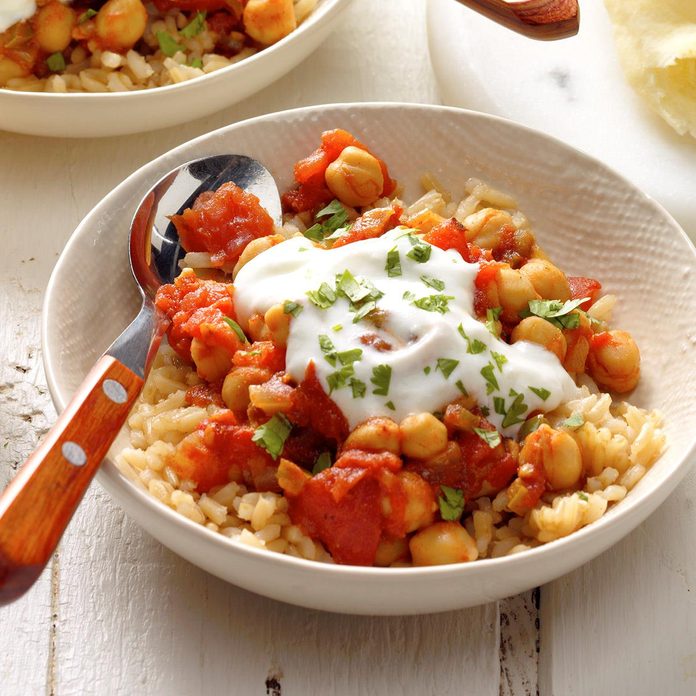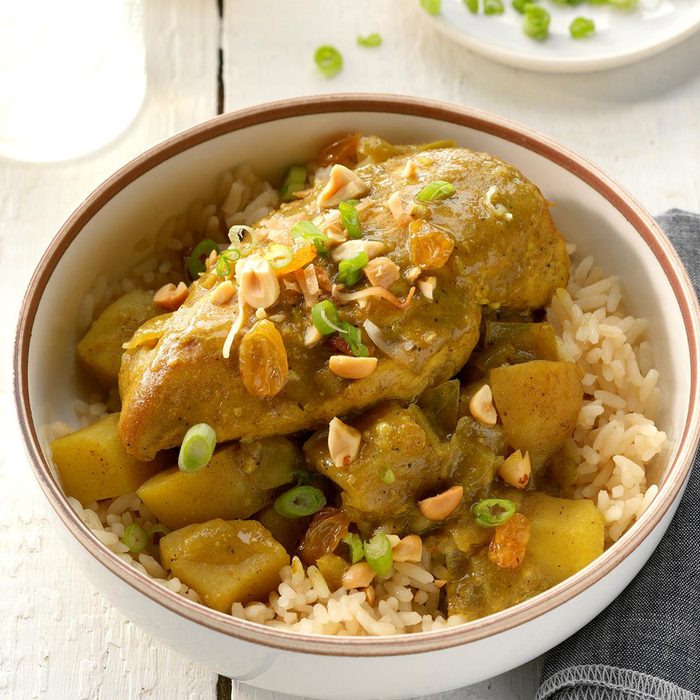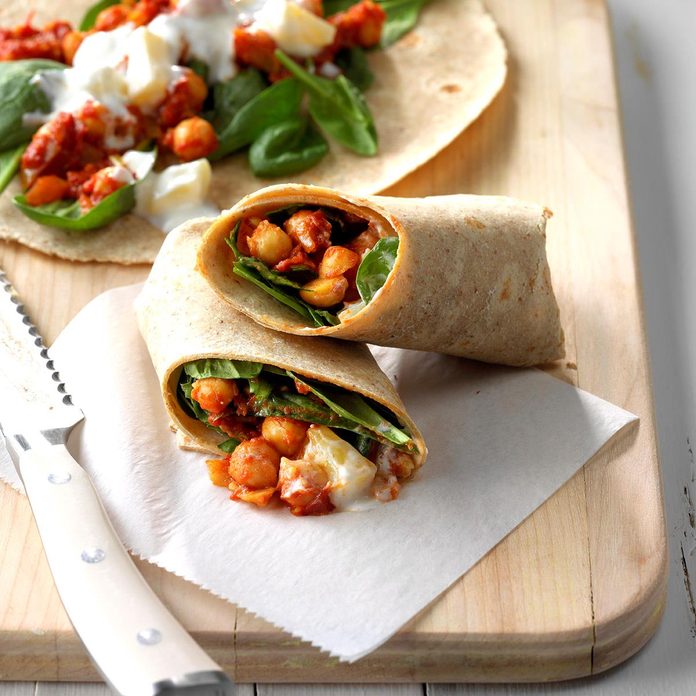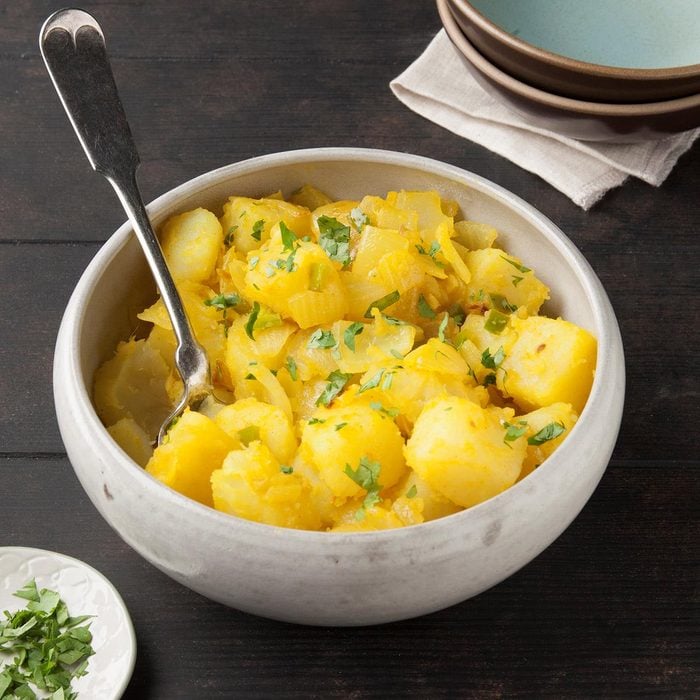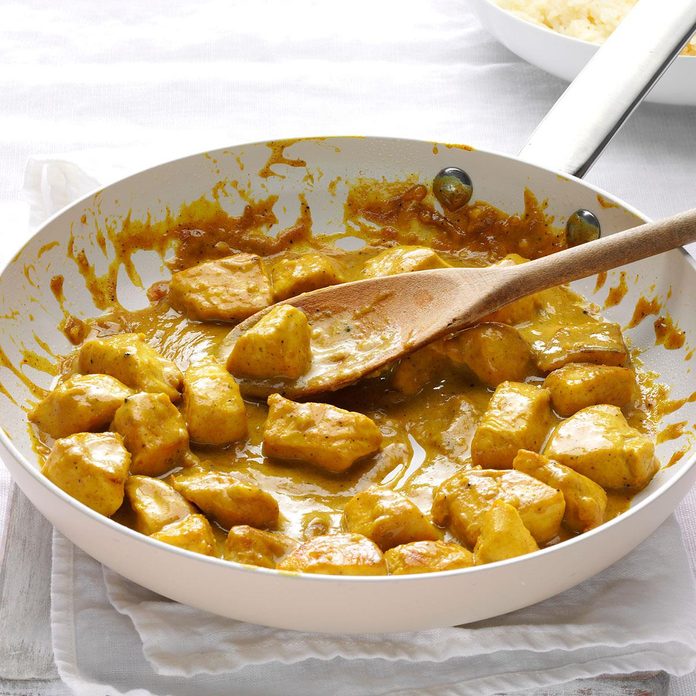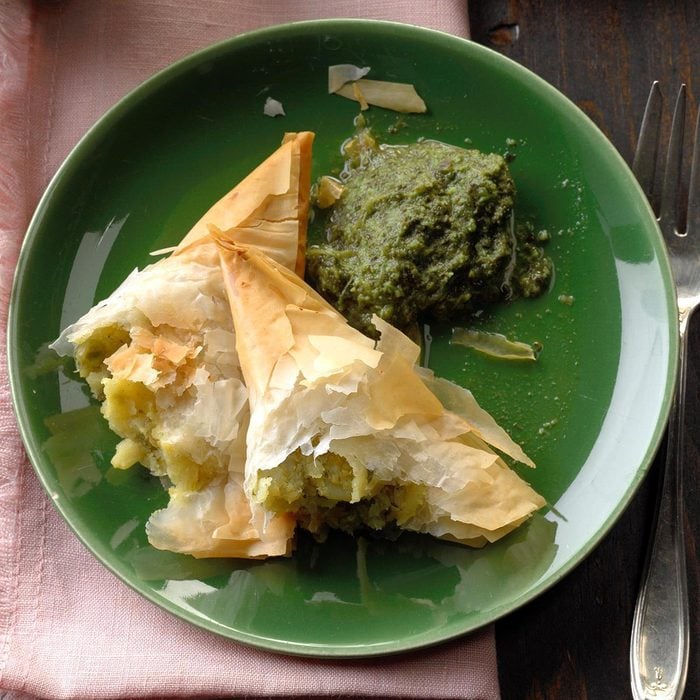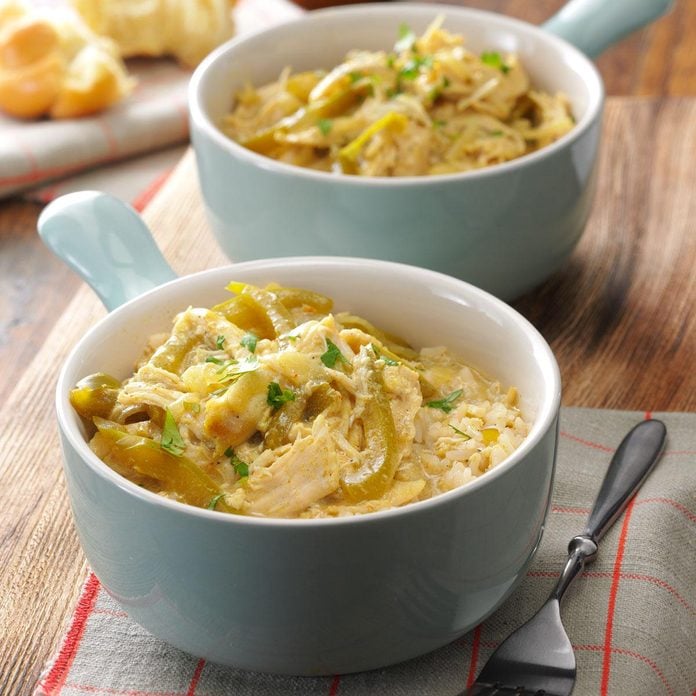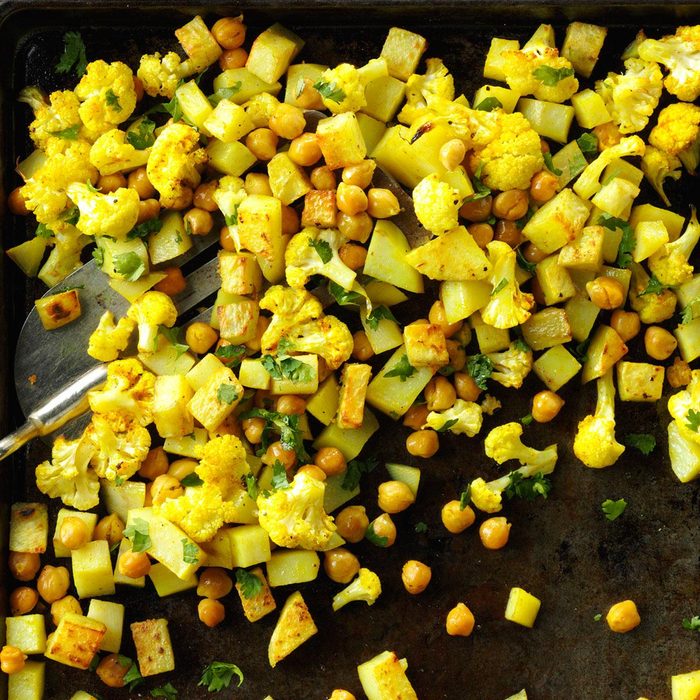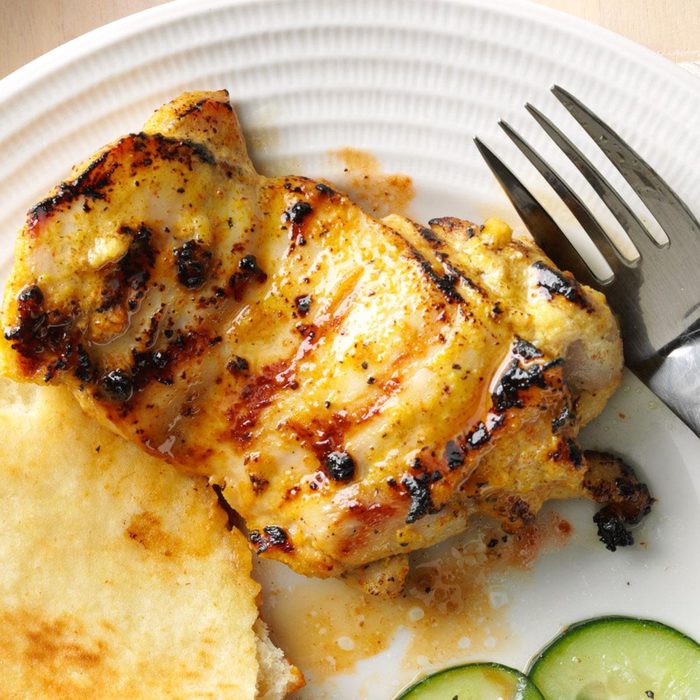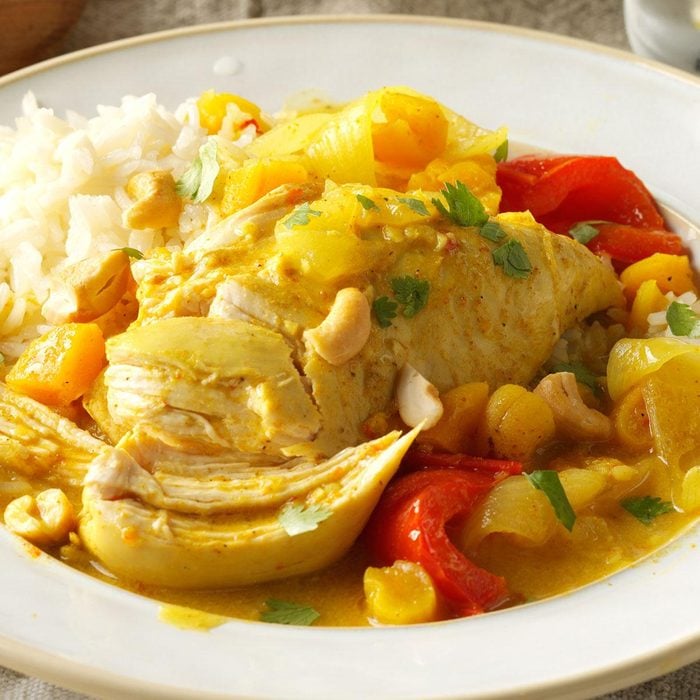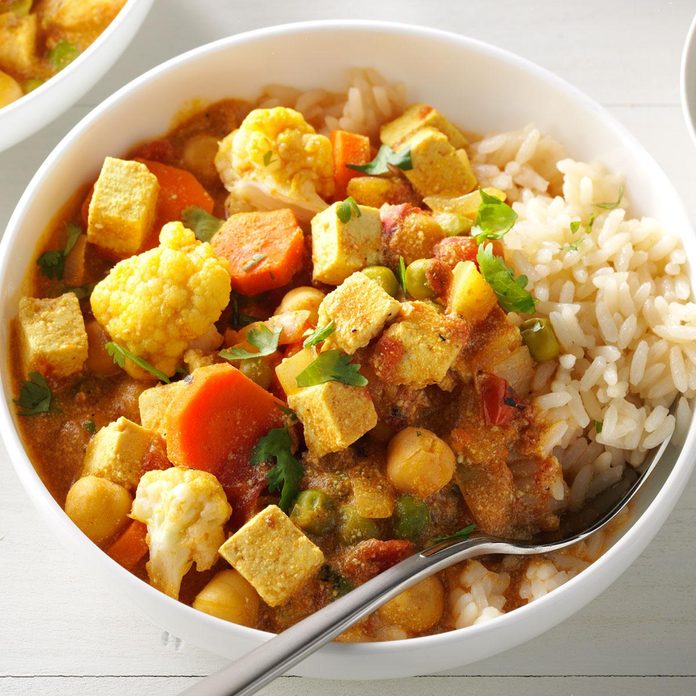For a long time, I thought curry was an Indian recipe I couldn’t master at home. It’s so full-flavored at restaurants, I assumed there was some kind of secret to its success. As it turns out, learning how to make curry at home is not only easy, it’s so easy to pull off that it’s become my go-to weeknight meal! It only requires one pot, and the prep is super simple.
What Is Curry?
Whether you’re brand-new to Indian cooking or have perfected the blend of flavors to make chicken tikka masala, you’ve probably come across the term “curry.”
This word has come to mean many things over the years, as Indian food traveled from the subcontinent to other countries. The spicy, flavorful Indian curry from your favorite takeout joint is most likely a British invention, brought back by soldiers returning from the subcontinent who incorporated the flavors they’d grown to love into a simple one-pot dish. This dish was heavily inspired by the North Indian version of a curry, using similar flavors and meats.
Curries within India vary depending on the region and might be meat-based, vegetable-based or even legume-based (incorporating chickpeas or lentils). Most curries in a region often (but not always) share similar characteristics.
- North India: Usually tomato-based and thickened with heavy cream or yogurt, often incorporate meat like lamb or chicken or paneer (Indian cottage cheese) and sometimes slightly sweet.
- South India: Often use mustard seeds, tamarind and curry leaves, thickened with coconut milk, and generally incorporate more seafood, though chicken, beef and vegetables are also popular.
- West India: More inclined toward fish along the Konkan coast and spicier vegetable and red meat concoctions in the desert regions.
- East India: Inclined toward seafood in the coastal region of Bengal, and thinner soups in the mountainous regions made with fish, lentils, meat and sprouts or shoots.
What Do You Put in a Curry?
The curry powder you might use at home is primarily a British creation, invented to make it easier to season curries once the Brits were back home. This blend usually has a base of turmeric (a beautiful yellow spice from the ginger family) and uses a mix of spices like cloves, cardamom, ginger, nutmeg, fennel, caraway, ajowan seeds, dried basil, mustard seeds, mace, poppy seeds, sesame seeds, saffron or cinnamon.
You might find it in supermarket aisles in the USA and the UK, but you’re unlikely to find it on a grocery list in India. Most recipes call for a specific blend of specific Indian spices and herbs depending on the region and the type of meat or vegetables being used. A common one is garam masala, a warm Indian spice blend that includes cinnamon, cloves and plenty of black pepper.
The real secret to curry success is using fresh spices. Toss the spices you’ve had in the cupboard for ages (yes, spices do expire) and purchase a batch of fresh new ones for your masala daba (AKA a spice container).
How Do You Make Curry Spicy?
Curries derive their spice from peppers—fresh, dried, blended in a paste or in powdered form—so adding extra chili peppers is an easy way to make your curry spicier. If you make your own curry or garam masala spice blend, add extra cayenne pepper to the mix. When using store-bought spices or curry pastes, the easiest way to add spice is to add fresh chilies like jalapeno, serrano, habanero or Scotch bonnet.
How to Make Curry
Editor’s Tip: This curry recipe is based on a basic North Indian recipe. If you’re looking for other authentic curries, look up korma, chicken jalfrezi, vindaloo or other Indian main dishes.
Ingredients
- 2 tablespoons vegetable oil
- 1/2-1 lbs meat, cut into bite-sized pieces (can use beef, pork, chicken, lamb or goat)
- 1 yellow onion, diced
- 3 cloves garlic, minced
- 2 teaspoons grated ginger root
- 1/2 to 2 tablespoons of garam masala, curry powder or a combo of both
- 2 cups broth (can use vegetable or chicken)
- 2 medium tomatoes, chopped, or 1 (15.5 ounces) can of diced tomatoes
- 1/2 cup heavy whipping cream, coconut milk or full-fat Greek yogurt
To plate the curry, also prepare:
- Cooked rice of your choice, for serving
- Minced fresh herbs, such as cilantro or mint, for garnish
Editor’s Tip: Curry is infinitely variable based on your tastes, so you’ll notice a lot of options in the ingredients list. Don’t let it overwhelm you—taste as you go and change up ingredients as needed.
Directions
Step 1: Brown the meat

Searing the meat is a great way to build layers of flavor into your curry, but you’ll need to add it in batches to get a hard sear and prevent steaming. Heat the vegetable oil over medium-high heat in a large skillet. Add the meat in batches, browning it on all sides, about 5 minutes. It doesn’t need to be cooked through—there will be plenty of time for that later! Then, remove it to a plate and set it aside while you brown the rest of the meat.
Step 2: Sweat the onions

Once the meat is finished browning, add the diced onion to the skillet and cook over medium-high heat until it has softened and starts to caramelize on the edges, about 5 minutes. There should be plenty of oil left in the pan, but you can add an extra glug of oil if you need.
Step 3: Bloom the spices
Now the fun begins: add the garlic, ginger and spices. Blooming the spices is a crucial step to creating a successful curry, as it releases essential flavor compounds. You only need about 30 seconds here; you don’t want the garlic to brown and become bitter. You know it’s done when the aroma in the room becomes completely intoxicating!
Step 4: Simmer the curry

Add the broth and tomatoes. Bring the mixture to a simmer and let the flavors meld for about 5 minutes. If you’re using meat, add the browned meat back to the simmering sauce and turn the heat down to low. Cover the skillet and cook for 5 to 10 minutes, until the meat is cooked through and tender.
Remove the curry from the heat and whisk in 1/2 cup heavy whipping cream, coconut milk or full-fat Greek yogurt to create an extra rich dish.
Step 5: Enjoy!
Once the curry is thick and saucy, it’s time to dig in! Serve the sauce over rice. Top with chopped fresh cilantro to balance the flavors.
Editor’s Tip: If your curry tastes flat, add a touch of salt or whisk in an acidic ingredient like vinegar or lemon juice.
Curry Variations
Indian curry is one of those dishes that’s easy to make your own! You can customize our recipe with any of the following variations.
- Vegetables: Instead of using meat, swap in 6 cups of vegetables, chopped into bite-sized pieces. Our favorite combinations are cubed potatoes and frozen peas, cauliflower and carrots or green beans and eggplant, but feel free to have some fun with it! You can skip the browning step and add them after the initial 5-minute simmer (when you would be adding the browned meat back to the curry). Simmer until the veggies are tender when pierced with a fork but not mushy, from 5 to 15 minutes.
- Legumes: Adding legumes (like chickpeas, lentils or beans) is a fantastic way to add plant-based protein to your curry. If you’re using dried beans, you’ll want to cook them ahead of time, but canned beans that have been drained and rinsed work just fine here. Like the veggies, skip the browning step and add the beans after the 5-minute simmer. Cook them until they’re warmed through, about 5 minutes.
- Fish or shrimp: Give your curry a coastal flair by swapping in seafood! Cut a pound of firm white fish (like cod or snapper) into bite-sized pieces, or use peeled and deveined shrimp. Since they only need 3 to 5 minutes to cook through, you can add the seafood at the end of the cook time and simmer until it’s just cooked through.
- Tamarind: Add a tablespoon of tamarind paste (available online and at specialty markets). While tamarind is usually more commonly seen in South Indian food, it’s an easy way to add a bite to a spicy curry. Or, mimic that flavor by adding acidity with a tablespoon of lemon or lime juice instead.
How to Store Curry
Store leftover curry in a sealed airtight container in the refrigerator. Shelf life depends on the ingredients—if you’ve used meat, keep what you can eat in the fridge for 2-3 days and freeze the rest. The same goes for paneer (Indian cottage cheese), or any curry that’s used yogurt/cream.
You have a little more leeway for a vegan curry with no meat or dairy—it’s safe to keep refrigerated for up to 3-4 days.
You can also pop your curry into a freezer container or plastic freezer bag to safely store up to 3 months in the freezer. You’ll find that the flavor and texture of your curry declines the longer it remains in there, so don’t forget to mark your container with the date!
What to Serve with Curry
Most curries are served ladled over a bowl of steaming, freshly cooked rice. While there are many types of rice, we recommend serving your curry over aromatic rice such as basmati or jasmine. Much of the enjoyment of curry is the delicious aromas, and using these types of rice is a great way to enjoy your meal even before you start to taste it.
If you’ve really thickened up the sauce, you might be able to scoop it up with naan bread or paratha. There are tons of Indian bread types out there for every kind of curry, though.
You can whip up cooling side dishes to go with the curry, like a cucumber salad or a corn salad, or even a plate of chaat. Plain yogurt or lassi are also great options to balance out the spice. Then, finish the meal with a classic Indian dessert!
The post How to Make Curry appeared first on Taste of Home.
Amrita Thakkar
